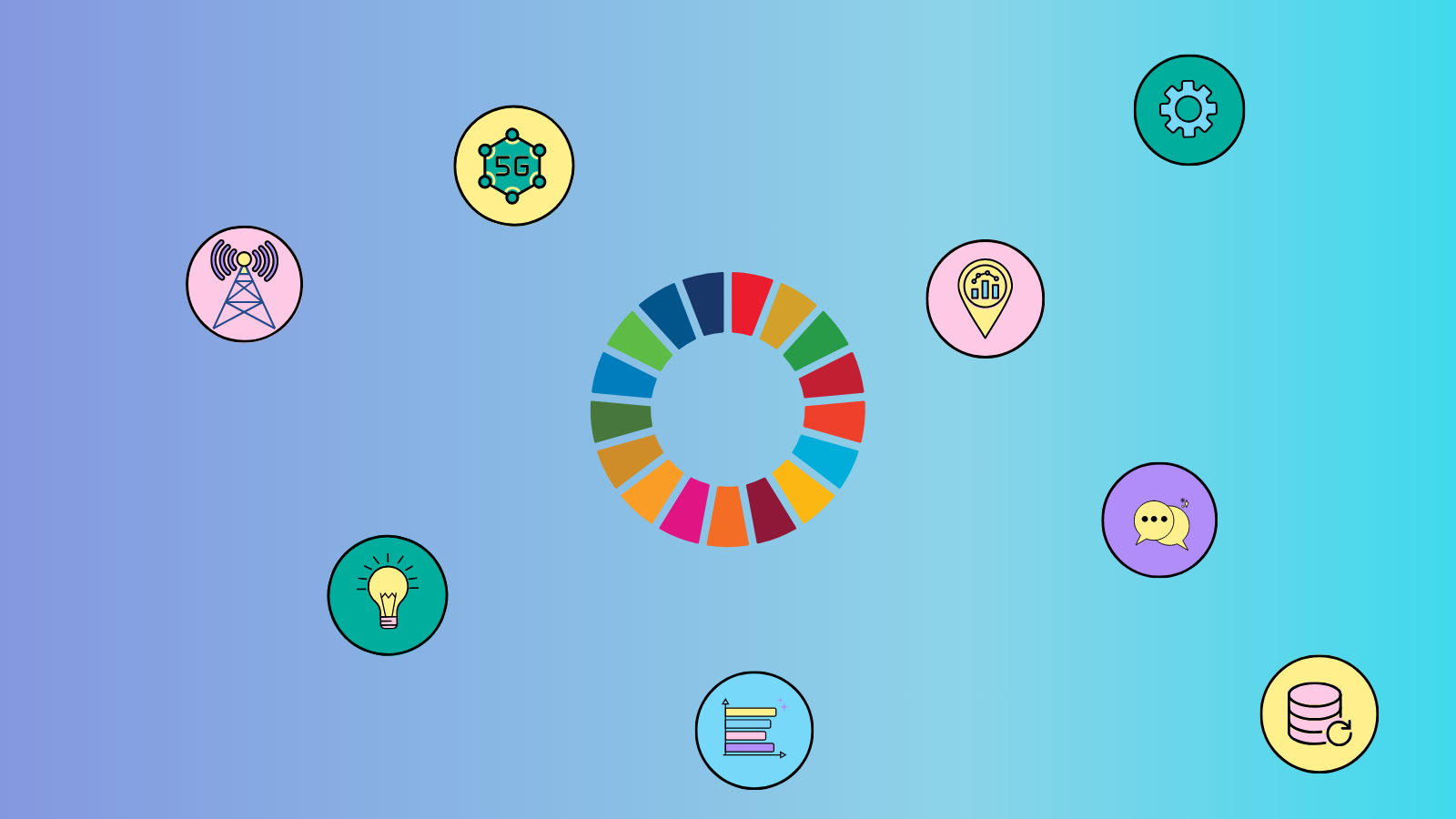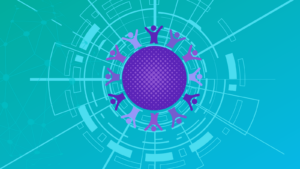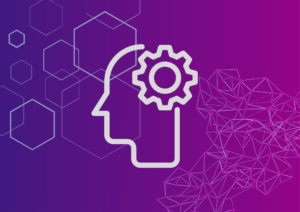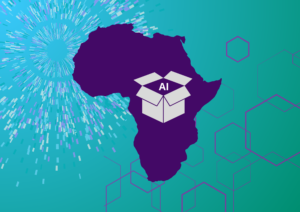Introduction
In an era driven by technological advancements, the world’s pursuit of sustainable development has become both a global priority and a complex challenge. The United Nations’ Sustainable Development Goals (SDGs) serve as a comprehensive roadmap for addressing pressing global issues such as poverty, inequality, climate change, and more. To navigate this intricate landscape successfully, the importance of data cannot be overstated. As part of the Datasphere Initiative 2022/2023 Fellowship Cohort, eight graduate students and young professionals were invited to develop research outputs for pressing challenges related to data governance and the Sustainable Development Goals (SDGs).
This blog summarizes those findings and shares why data serves not only as a means to monitor progress but also as a powerful tool to inform policies, drive interventions, and catalyze transformation. The analysis explores dual concepts of data as infrastructure and the necessity for improved data infrastructure at the national level in achieving the SDGs.
Data as Infrastructure
Just as roads, bridges, and utilities are vital components of physical infrastructure, data can be conceptualized as the digital infrastructure underpinning sustainable development efforts. The analogy draws attention to data’s foundational role in facilitating effective decision-making, fostering innovation, and enabling cross-sector collaboration. Just as a nation’s economic growth relies on well-connected physical infrastructure, the achievement of the SDGs hinges on robust data infrastructure.¹
In the context of the SDGs, data as infrastructure encompasses more than just statistical indicators. It includes a wide range of data types, such as geospatial information, satellite imagery, social media sentiment, and real-time sensor data.² This diverse array of data sources empowers stakeholders to gain a multifaceted understanding of complex challenges and devise targeted solutions. For example, satellite data can monitor changes in forest cover and urban expansion, aiding in sustainable land use planning to fulfill SDG 15 (Life on Land) and SDG 11 (Sustainable Cities and Communities).³
By making it easier to develop ICT infrastructure and provide ubiquitous and inexpensive internet access, unlocking the value of data is essential for realizing SDG 9.c. ‘Build resilient infrastructure, promote inclusive and sustainable industrialization and foster innovation’. Understanding the requirements, expectations, and usage patterns of individuals, communities, and industries depends heavily on data. Policymakers and organizations are better equipped to allocate resources, plan inclusive and sustainable industrialization projects, and install ICT infrastructure by utilizing and analyzing data. Data-driven insights help the accomplishment of SDG 9.c’s goals by enabling targeted interventions, effective resource allocation, and evidence-based policymaking.
Gabriel Souto, Fellow, Datasphere Initiative
Better Data Infrastructure at the National Level
While global efforts focus on achieving the SDGs collectively, it is essential to recognize the pivotal role of individual countries in realizing these objectives. National governments act as the primary implementers of SDG-related policies and interventions, making their data infrastructure crucial for success. Many countries, particularly in the Global South, face challenges in collecting, managing, and utilizing data effectively. Insufficient technical capacity, limited resources, and fragmented data ecosystems hinder their ability to accurately make informed decisions and monitor progress.⁴
Investing in better data infrastructure at the national level has far-reaching benefits. A robust data ecosystem enables countries to tailor interventions to their unique contexts, thus maximizing impact. For instance, data-driven analyses of healthcare access can help identify underserved regions, enabling targeted healthcare interventions to meet SDG 3 (Good Health and Well-being) targets. Additionally, well-structured data systems enable governments to track and address disparities among different demographic groups, thereby advancing SDG 10 (Reduced Inequality).
SDG 16 is devoted to the promotion of peaceful and inclusive societies for sustainable development, the provision of access to justice for all, and to the establishment of effective, accountable, and inclusive institutions at all levels. Target 16.1: Significantly reduce all forms of violence and related death rates everywhere. Open-source monitoring (otherwise known as Open Source Intelligence or OSINT) of human rights violations and targeted violence is an innovative approach that uses technology to gather, sort, and analyze data from publicly available sources, including social media, video and image-sharing websites, mapping tools, and satellite imagery. Data aggregated through open-source monitoring can be used by advocacy groups, journalists, and other human rights defenders to compile evidence and enhance prosecution of violations against peace, justice, and human rights.
Arindrajit Basu, Fellow, Datasphere Initiative
Beyond Statistical Tracking: Data-Powered Knowledge and Technologies
Data’s significance extends beyond its use for statistical tracking of the SDGs themselves; it empowers stakeholders with knowledge-driven insights and facilitates the deployment of cutting-edge technologies and interventions. Advanced analytics, artificial intelligence, and machine learning techniques enable predictive modeling and scenario analysis, enhancing decision-makers ability to plan for future challenges.⁵
Consider the realm of disaster management and climate resilience pertinent to SDG 13 (Climate Action). By analyzing historical and real-time data, governments and organizations can predict the impact of natural disasters, optimize evacuation plans, and allocate resources efficiently.⁶ Similarly, the fusion of data and technology is driving innovations in renewable energy, contributing to SDG 7 (Affordable and Clean Energy) by enhancing the efficiency and accessibility of sustainable energy sources.⁷
The lack of accuracy of climate preparedness strategies is caused by a persistent climate action data gap. National Greenhouse Gas inventories are the primary tool for tracking anthropogenic (human-induced) GHG emissions at the country, sector, and source category level.⁸ Over the next years, these inventories will support setting and measuring progress against each country’s “nationally determined contributions” (NDCs) for reducing GHG emissions while also supporting domestic climate policy development and evaluation. Climate data collection and interpretation must be improved, especially locally. Gaps are related to quantity (omissions) and quality (updates, etc.). Specifically related to adequate coverage, regular updates, timeliness, online availability, availability of historical data, reusability, machine-readability, accessibility, and completeness.
Francesca De Chiara, Fellow, Datasphere Initiative
Data-empowered artificial intelligence (AI)
While there are increasing legitimate concerns around AI – from transparency to diversity and ethics, to name a few, it is undeniable that data-empowered artificial intelligence (AI) plays a pivotal role in driving progress towards the Sustainable Development Goals (SDGs). By harnessing the vast volumes of data generated across sectors, AI technologies can uncover intricate patterns, make predictions, and provide insights that amplify the impact of efforts to achieve the SDGs.
For instance, AI can enable precision in resource allocation, optimizing healthcare, agriculture, and energy interventions. It can aid in identifying vulnerable populations, predicting disease outbreaks, and devising tailored solutions, thereby advancing health and well-being (SDG 3). Moreover, AI-driven analysis of environmental data contributes to climate action (SDG 13) by modeling climate patterns, enhancing disaster management, and supporting sustainable resource management. AI-powered technologies also promote inclusivity, such as speech and image recognition for people with disabilities, fostering reduced inequalities (SDG 10).⁹
As AI continues to evolve, its ability to swiftly process and interpret data holds immense potential to accelerate progress toward the SDGs and unearth innovative solutions to complex global challenges.
Conclusion
In the global pursuit of sustainable development, data’s role as infrastructure and the imperative for improved data infrastructure at the national level are inseparable. Data serves as the bedrock upon which informed decisions, effective policies, and transformative interventions are built. By embracing data-powered knowledge and leveraging technology, countries can propel themselves closer to achieving the ambitious Sustainable Development Goals. As we stand on the cusp of a data-driven future, fostering a culture of data collection, sharing, and utilization is not just an option but a necessity for a more equitable, prosperous, and sustainable world.
¹ Australian Urban Research Infrastructure Network, (2023), https://sdgs.org.au/project/aurin-a-spatial-data-infrastructure-to-help-monitor-and-evaluate-australias-sustainable-development/
² Australian Urban Research Infrastructure Network, (2023), https://sdgs.org.au/project/aurin-a-spatial-data-infrastructure-to-help-monitor-and-evaluate-australias-sustainable-development/
³ Global Forest Watch, (2022), Investigate forest change with recent satellite imagery, https://www.globalforestwatch.org/help/map/guides/investigate-forest-change-satellite-imagery/
⁴ Under half the world’s people still do not use the Internet, according to ITU’s latest statistics. Disenfranchised populations, particularly women and girls, older people, persons with disabilities, indigenous populations, and the economically disadvantaged, as well as people living in LDCs, landlocked developing countries, and small island developing states, need to be included in the emerging digital society to meet all 17 SDGs. ITU, (2021, Digital technologies to achieve the UN SDGs)
⁵ Ricardo Vinuesa, Hossein Azizpour, Iolanda Leite, Madeline Balaam, Virginia Dignum, Sami Domisch, Anna Felländer, Simone Daniela Langhans, Max Tegmark & Francesco Fuso Nerin, (2020), The role of artificial intelligence in achieving the Sustainable Development Goals, https://www.nature.com/articles/s41467-019-14108-y
⁶ Haishan Fu, (2023) We need disaster data to save lives and guide recovery, World Bank Blogs, https://blogs.worldbank.org/opendata/we-need-disaster-data-save-lives-and-guide-recovery
⁷ International Energy Agency, (2021), Better energy efficiency policy with digital tools, https://www.iea.org/articles/better-energy-efficiency-policy-with-digital-tools
⁸ Emily McGlynn, Serena Li, Michael F. Berger, Meredith Amend & Kandice L. Harper, (2022), Addressing uncertainty and bias in land use, land use change, and forestry greenhouse gas inventories, https://link.springer.com/article/10.1007/s10584-021-03254-2
⁹ Ricardo Vinuesa, Hossein Azizpour, Iolanda Leite, Madeline Balaam, Virginia Dignum, Sami Domisch, Anna Felländer, Simone Daniela Langhans, Max Tegmark & Francesco Fuso Nerin, (2020), The role of artificial intelligence in achieving the Sustainable Development Goals, https://www.nature.com/articles/s41467-019-14108-y





